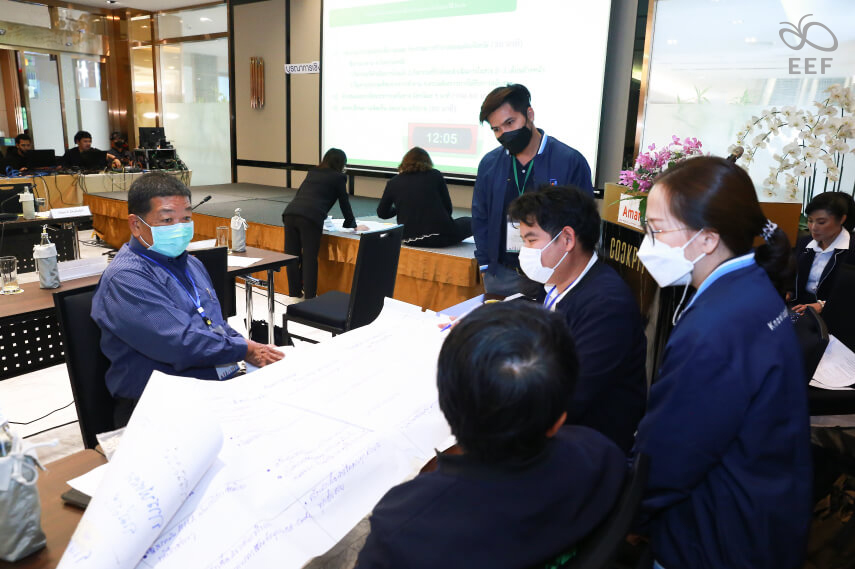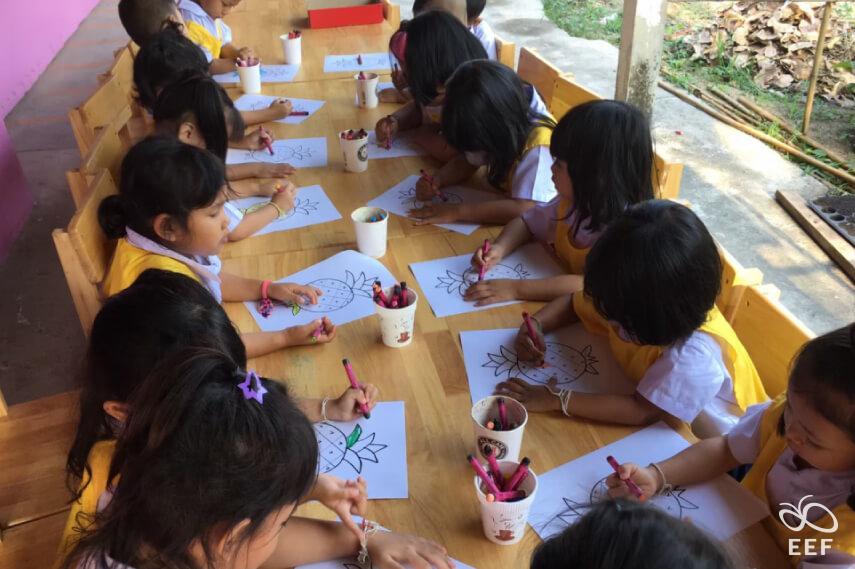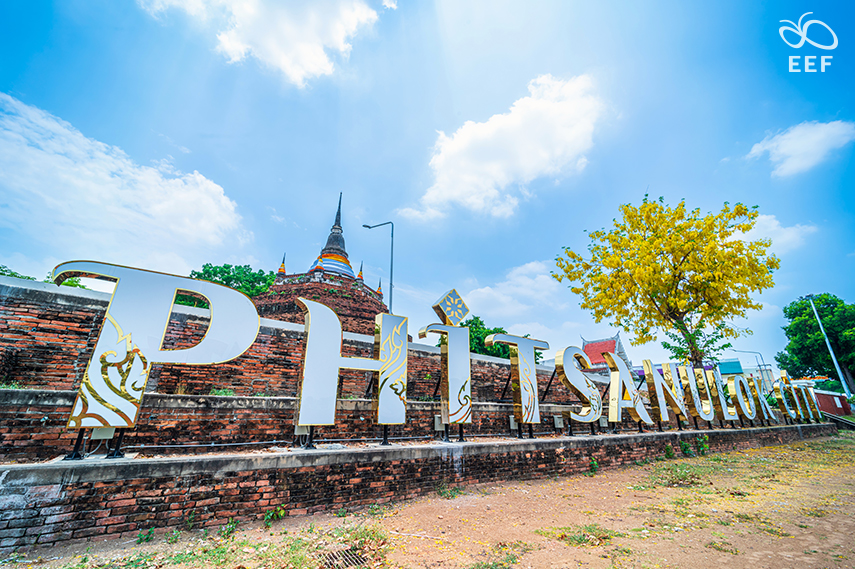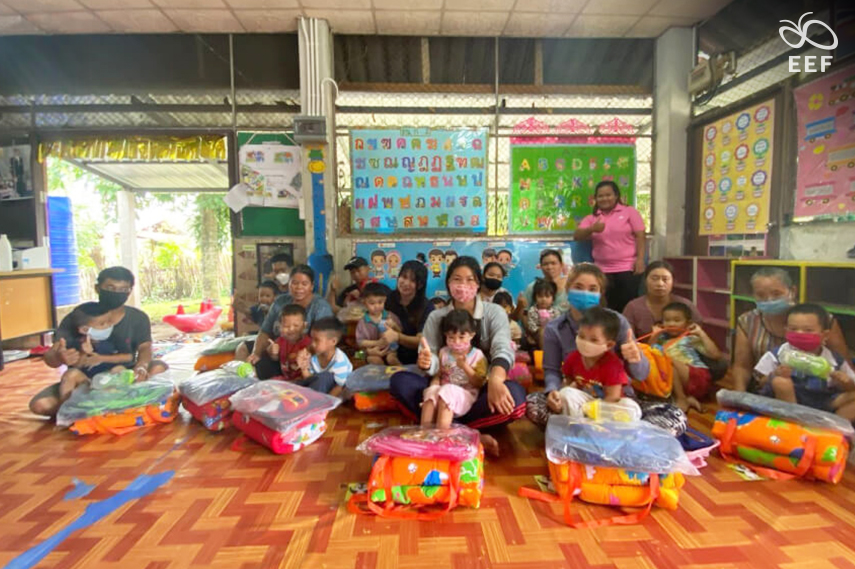
Rayong Eastern Learning Corridor
Objective: To create an inclusive learning environment, empowering local communities to actively participate in shaping educational strategies aimed at reducing educational disparities.

Key Component:
Interagency Collaboration:
- Establish the “Provincial Education Foundation” to foster collaboration among all sectors to exchange information and develop long-term work methodologies tailored to local contexts, driven from the bottom-up;
- Establish the “Rayong Inclusive Learning Academy (RILA)” to systematically develop an urban learning ecosystem supporting new career opportunities and to promote diverse educational opportunities accessible to all ages;
Data & Resource Management:
- Develop a comprehensive database system to collect and analyze educational data from multiple agencies, ensuring accurate and accessible information for unified informed decision-making;
- Encourage innovation stemming from the expertise of various agencies;
Recruitment of Local Talent:
- Work consistently with community members, sparking and maintaining momentum;
- Involve volunteers of all ages as community communicators to drive continuous change.
Potential Implication:
- Improved Access: Enable continuous learning for individuals of all ages through flexible, diverse educational programs;
- Curriculum Customization: Tailor educational programs to meet the evolving needs and interests of the targeted groups;
- Unified Database System: Interconnect databases of underprivileged and marginalized children and youth across the province into a unified system to effectively manage innovative education;
- Tailored Support: Provide second-chance opportunities for out-of-school youth, facilitating their re-entry into the educational system;
- Community Engagement & Empowerment:
- Empower local stakeholders to actively contribute to educational initiatives;
- Foster a culture of continuous learning and development for sustainable growth;
- Social Cohesion Enhancement: Promote inclusivity, diversity, and social cohesion;
- Sustainable Development: Contribute to long-term socio-economic development.

The “Rayong Eastern Learning Corridor” marks a transformative milestone in area-based educational development. At its core lie the Provincial Education Foundation, uniting stakeholders across sectors to forge a localized approach to educational advancement, and the Rayong Inclusive Learning Academy (RILA), a visionary urban learning hub poised to foster diverse career opportunities and broaden educational access for all demographics. By harnessing local knowledge and environmental dynamics, Rayong is paving the way towards becoming a dynamic “Learning City,” where innovative learning infrastructure and collaborative networks empower continuous growth and socio-economic resilience. Additionally, the inclusion of volunteers as community communicators ensures continuous grassroots involvement and support. Plans are in place, including organizing “Mobile Exchange Forums” for deeper community communication and involving more diverse stakeholders. Through strategic partnerships with educational institutions, local enterprises, and civic agencies, Rayong is poised to redefine educational paradigms, ensuring universal access to lifelong learning opportunities, and advancing sustainable community development.
Phitsanulok One-Stop At-Risk Children and Youth Assistance Model

Objective: To provide immediate and comprehensive support to at-risk children and youth through a multi-disciplinary approach, ensuring they remain within the educational system and receive necessary assistance within 24 hours.
Key Component:
Interagency Collaboration:
- Establish the “Support Center for Children and Youth in Crisis” to address educational crises among children and youth;
-
-
- Establish the “Rapid Response Team,” with case managers ready to act immediately, addressing root issues and providing targeted solutions;
- Establish the “One-Stop Service” to expedite urgent cases to specialists within 24 hours, providing both short-term and long-term assistance plans to keep at-risk children in the educational system;
-
Data & Resource Management:
- Develop a centralized database system for all agencies to access, ensuring timely and seamless aid delivery;
- Facilitate communication and resource sharing between local agencies, forming an extensive support network;
Tailored Learning Environment Establishment:
- Support vocational training for youth in shelters during school breaks;
- Collaborate with businesses to provide accommodation, meals, and potential employment opportunities;
Potential Implication:
- Tailored Support:
- Continuously supports individuals of all ages through flexible and diverse educational programs;
- Provide second-chance opportunities for out-of-school youth, facilitating their re-entry into the educational system;
- Community Engagement & Empowerment: Involves local stakeholders in educational initiatives, fostering a culture of continuous learning and development;
- Social Cohesion Enhancement: Promote inclusivity, diversity, and social cohesion;
- Sustainable Development: Contribute to long-term socio-economic development.

The “Phitsanulok One-Stop At-Risk Children and Youth Assistance Model” stands as a beacon of proactive support and community resilience. Over the past three years, Phitsanulok has steadfastly enhanced its localized educational initiatives through robust partnerships between the public and private sectors. This collaborative network, akin to a safety net for children and youth of all backgrounds, ensures swift and effective responses to urgent educational crises. The introduction of dedicated case managers well-equipped to address root causes promptly exemplifies this commitment, facilitating timely interventions that stabilize vulnerable educational trajectories. As plans materialize for community learning centers across sub-districts and further integration of educational, administrative, and community resources, Phitsanulok anticipates a future where every child, regardless of circumstance, finds enduring support within a nurturing and inclusive educational environment. This forward-looking approach not only promises to uplift individual educational outcomes but also catalyzes broader societal cohesion and sustainable development across the province.

